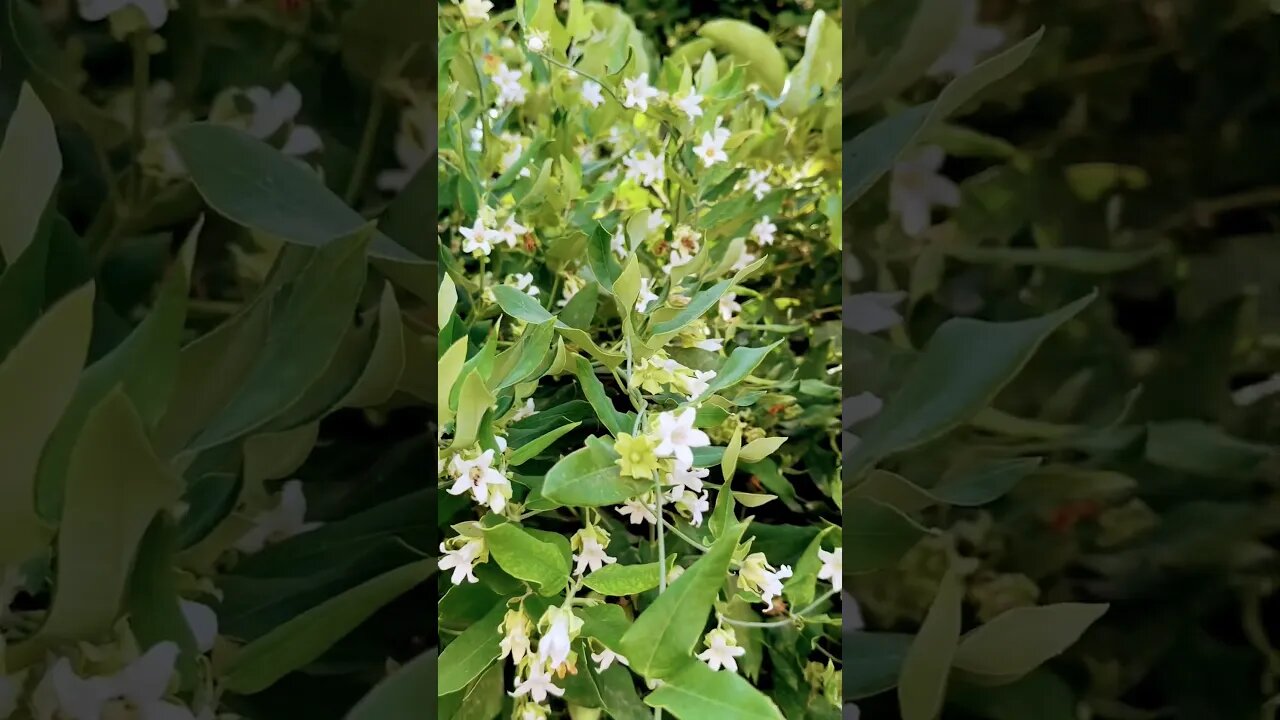Premium Only Content

Everything about the Moth Plant
Moth Plant (Araujia sericifera), also known as the White Bladderflower, Cruel Vine, or Common Moth Vine, is a perennial climbing plant native to South America, particularly in Brazil, Paraguay, Argentina, and Uruguay. It has been introduced to other parts of the world, including Australia, New Zealand, and parts of Europe, where it is considered invasive due to its ability to crowd out native species.
Characteristics
The plant is known for its fast growth and vigorous nature. Its stems can climb over other vegetation, reaching a height of up to 7 meters.
The leaves are opposite, oval-shaped, and have a green glossy appearance. The leaf edges are entire and the leaf base is cordate (heart-shaped).
The plant gets its common name from the moth-like appearance of its flowers. These are waxy white, sweetly scented, and typically bloom in the evening to attract moths for pollination. Following flowering, the plant produces large, bladder-like seed pods that contain numerous black seeds with silky tufts of hair that facilitate wind dispersal.
Impact
Despite its attractive flowers and fragrance, Moth Plant is considered a weed in many areas where it has been introduced. It can form dense infestations that smother and kill other plants, thereby reducing biodiversity. Its ability to produce a large number of seeds, combined with its robust climbing growth habit, allows it to spread quickly and over large areas. Control can be challenging due to the plant's ability to regrow from root fragments.
Control Methods
Control methods for the Moth Plant can vary depending on the specific situation. Manual control methods can include hand-pulling or digging out the plant, including as much of the root system as possible. For larger infestations, chemical control might be necessary. Always check with local regulations and guidelines when considering chemical control, as some substances might be restricted or require special permits.
In gardens, it's recommended to monitor the area for new growth and remove any seedlings immediately. It's also advisable not to plant it due to its invasive potential, even if it's not currently considered a problem in the local area.
-
 LIVE
LIVE
Tundra Tactical
5 hours ago $0.01 earnedDadlefield Game Night BF6 New Update Weapon Grind
152 watching -
 15:39
15:39
Megyn Kelly
5 hours agoTucker Carlson on Why He Interviewed Nick Fuentes and What He Wanted to Convey To Him
49.8K72 -
 1:14:10
1:14:10
Kim Iversen
5 hours agoZionists PANIC Over Muslim Mayor In NYC
84.6K142 -
 1:50:40
1:50:40
Redacted News
5 hours agoBREAKING! Trump Makes HUGE Announcement Trying To Save MAGA, Cost of Living & Israel CRUSHED GOP
117K230 -
 LIVE
LIVE
Dr Disrespect
11 hours ago🔴LIVE - DR DISRESPECT - ARC RAIDERS - QUEST MASTER
1,008 watching -
 2:17:37
2:17:37
The Quartering
7 hours agoFooled Again! Mamdani Backtracks Everything & Today's Breaking News!
207K127 -
 1:17:04
1:17:04
DeVory Darkins
8 hours agoPelosi SURRENDERS announces retirement and Bernie Sanders makes stunning admission
120K125 -
 4:35:22
4:35:22
StoneMountain64
8 hours agoArc Raiders is actually INCREDIBLE
70.6K2 -
 7:39:54
7:39:54
FusedAegisTV
10 hours agoFUSEDAEGIS PLAYS THE GREATEST JRPG EVER MADE ⌛► CHRONO TRIGGER (1995) Part 4
25.6K2 -
 1:57:50
1:57:50
The Charlie Kirk Show
9 hours agoErika's Interview + Auburn Aftermath | Schlichter, Lomez | 11.6.2025
119K22